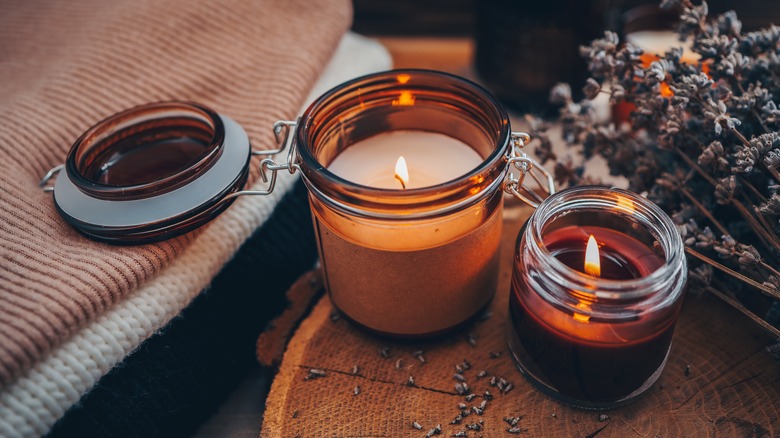What It Could Mean If Your Bathroom Walls Are Sweating A Brown Color
When you paint your bathroom walls or add wallpaper to them, you're seeking the perfect color and design to show off your personal style. When that look becomes ruined because of smears and streaks of brown, it's easy to fall into a panic, wondering how this could have happened. Fortunately, brown streaks and stains on your bathroom walls have a few different potential explanations that you can remedy relatively easily. A common explanation for this issue occurs when you have a smoker in the home. Running a gas-powered heater in the bathroom can cause the same issues over time as well. Other potential issues involve having excessive humidity or a bad paint job that leads to unwanted bleed-through.
Ultimately, introducing extra moisture or smoke particles is the most common reason that you'll see streaks and stains on the walls. The best way to fix the problem is to make use of a dry cleaning sponge or soot sponge. These are considered dry methods of cleaning soot, so they should not cause the residue to smear around on the walls, delivering better cleaning results. You may need to make use of steam cleaning to loosen the residue left behind, especially if it's from smoking, allowing you to wipe it away. You also could hire a professional cleaning service that specializes in removing odors and staining from walls to take care of the problem.
How excess humidity in the bathroom can lead to brown stains on walls
If your bathroom does not have the proper ventilation or a working exhaust fan, this can lead to the staining that you may be seeing. Whenever you shower or take a hot bath, the humidity in the room increases from the steam generated, potentially leading to condensation on the walls. Eventually, this unwanted moisture can cause the appearance of yellow or brown staining. "The drip marks from hot water often result in brown lines running down your wall when the water evaporates, leaving mineral deposits that resemble droplets," Gene Fitzgerald of Best Osmosis Systems tells Realtor.com. "They can spread into bigger spots if left unattended."
If the condensation remains in place without remedy, it could cause the formation of mold or mildew as well. These spots could appear to be brown, especially in the early days of their formation. If the material you're seeing is mold, it likely will thicken and become textured as it grows, however.
The good news is that you can easily install a new bathroom exhaust fan, which can help reduce the humidity problems and cut down on further staining. If you want a simpler option, you could try opening a window each time you shower. Another option is to install a dehumidifier to reduce the buildup of condensation if you have the available space.
More causes of brown streaks on your bathroom walls
If you often light a candle while relaxing in the bathtub in your bathroom, this could lead to a buildup of soot on the walls over time. This would involve burning a lot of candles over a long period of time, but it could eventually create brownish staining on the walls. When wax from the candle wax moves to the wick faster than it can burn away, it can cause a greater release of soot.
If you have a smoker in the home, you probably researched multiple methods for removing cigarette smells from your furniture and walls. Over time, beyond the odor of cigarettes, you may notice staining, especially in the bathroom. The residue from the smoke and chemicals from cigarettes or from vaping can build up on the walls over time. These are sticky substances that attract dirt and grime that can lead to the staining effect, causing a reaction with wallpaper that results in darkening.
Finally, when you have painted walls in your bathroom, surfactant leaching may cause brown stains. Surfactants are a key ingredient of latex paint, and they remain invisible when the paint cures properly. However, if the paint job has not had the time to dry before it was exposed to high humidity, it can cause the surfactants to become visible. If you see brown streaks that indicate surfactant leaching, you can wipe the area with a damp cloth to remove the stains.


